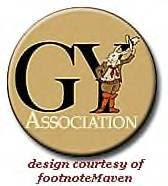During the Civil War, soldiers that succumbed to wounds or disease were typically buried close to where they died. If their name was known, their grave could be marked with whatever materials were at hand — most commonly the etching of the name into a wooden board. .
Burial Detail
After the creation of Vicksburg National Cemetery, extensive efforts were made by the War Department to locate the remains of Union soldiers originally buried throughout the southeast in the areas occupied by Federal forces during the campaign and siege of Vicksburg — namely, Arkansas, Louisiana, and Mississippi. However, by the time of these re-interments many of the wooden markers had been lost to the elements, and identification of many of the soldiers was rendered impossible. .
Unknown Soldier Grave Markers
Others who died during the Federal occupation of Vicksburg were buried at various points in the Vicksburg vicinity prior to the cemetery's establishment. Record-keeping was haphazard under wartime conditions and these grave locations were often lost. Following the Civil War, the U.S. Army located and exhumed the remains of 300,000 Union soldiers buried in the South, re-interring the remains in national cemeteries throughout the country.
At Vicksburg National Cemetery, 75% of the Civil War dead are listed as unknowns, Rounded, upright headstones mark the graves of the known soldiers, while small, square blocks, etched with a grave number only, designate the burials of the unknowns. . No one of national fame is buried in Vicksburg National Cemetery, with Brevet Brig. Gen. Embury D. Osband qualifiying as the highest-ranking veteran interred (Grave #16648, Section O).
In the late 1860's, two Confederates were mistakenly buried in Section B of the cemetery (Private Reuben White, 19th Texas Infantry Regiment, Grave #2637; Sergeant Charles B. Brantley, 12th Arkansas Sharpshooters Battalion, Grave #2673). .
The first national cemeteries established by Congress in 1862 were to provide a burial place for "soldiers who shall die in the service of the country". At the time, this provision applied only to Union war dead. Following the Spanish-American War, veterans of later wars became qualified for burial in national cemeteries, and approximately 1,300 veterans of conflicts subsequent to the Civil War are interred in Vicksburg National Cemetery. A scattering of other burials includes veterans who served during peace time, former cemetery superintendents and their families, wives and children of veterans, government workers, and a few civilians of the past century.
Vicksburg National Cemetery was under the jurisdiction of the War Department until 1933, when administration was turned over to the Department of the Interior's National Park Service. The last cemetery superintendent, Randolph G. Anderson, retired in 1947, and supervision of the cemetery became the added responsibility of the superintendent of Vicksburg National Military Park.
Vicksburg National Cemetery has been closed for burials since May 1961 except to those individuals who had reserved space for interment prior to that time.
The names of the soldiers interred in Vicksburg National Cemetery have been compiled from the original cemetery ledgers. The three-volume set contains only basic information about each known veteran, recorded at the time of re-interment. Although the handwritten pencil entries are in remarkable condition, many do contain inaccuracies and/or only partial information about the soldier. see : Here for List of Interments
The City of Vicksburg served as a major hospital center in the early years of the Civil War. A section in the Cedar Hill (Vicksburg City ) Cemetery was set aside to provide a fitting burial place for Confederate soldiers who died of sickness or wounds.
View of China Street showing the Washington Hotel, circa 1876. at left.
During the siege the building was pressed into service as a hospital.
Reverend William Lovelace Foster, Chaplain of the 35th Mississippi Infantry, spent time in the Washington Hotel ministering to sick and wounded soldiers. He wrote of the hotel,
It was comparatively secure from those troublesome mortar shells – for the most of them passed over & it was too far from our lines to be disturbed by firing from that direction. Dr. Whitfield with several assistants attended to the invalids. All the rooms were soon crowded with the sick & dying – Some in bunks & some upon the floor. Everything was conducted as well as possible but O the horrors of a hospital!
Confederate dead from the Vicksburg campaign originally buried behind Confederate lines, have now been re-interred in the Vicksburg City Cemetery (Cedar Hill Cemetery), in an area called "Soldiers' Rest." Approximately 5,000 Confederates have been re-interred there, of which 1,600 are identified.
Did You Know?
The 43d Mississippi Infantry's mascot, Douglas the Camel, remained with the regiment until Vicksburg where he was killed by Union sharpshooters. Douglas is honored with his own grave marker in Vicksburg's Cedar Hill Cemetery. Two accounts related to Douglas the camel where taken from the Confederate Veterans Magazine excepts listed below source
FIRST REFERENCE, FROM CONFEDERATE VETERAN MAGAZINE, VOL. 1, P.267:
“Company B, of the Forty-third Mississippi Infantry, had a veritable camel, belonging to
Lieut. W. H. H------ [Lt. William H. Hargrove], and the use he was put to was to carry the baggage of the officers' mess. The horses of the command were afraid of the camel, and the driver was instructed to stop just outside the camp when it halted. But in a forced march toward Iuka, Miss., the command had halted just after dark, and the camel and
driver got in the line of march before he knew it. The result was that a horse made a break
with a fence rail attached to his halter, and running through the camp, he stampeded men
and animals in every direction. Many men took [to] trees or any other protection, and the
panic spread through much of the brigade, and many men and animals were badly hurt,
and one or two horses, I think, were killed. The camel was in the siege of Vicksburg, and
was killed there by a minie-ball from the enemy. But none of the Forty-third have
forgotten the stampede near Iuka, Miss., just before the Battle of Corinth.”
SECOND REFERENCE, FROM CONFEDERATE VETERAN MAGAZINE, VOL. 11,
NO. 11:
“’OLD DOUGLAS’ --TItE CAMEL BURDEN BEARER.
J. W. Cook, of Helena, Ark., who belonged to Company A, Forty-Third Mississippi
Regiment, writes of an interesting attache of the regiment who could not speak for himself
even had he survived the carnage of war:
‘Old Douglas’ was an African camel and belonged to the Forty-Third Mississippi
Regiment. He was given to Col. William M. [actually ‘H.,’ for Hudson] Moore, of the
regiment, by Lieut. [William H.] Hargrove. of Company B. Col. Moore assigned Douglas
to the regimental band, for whom he carried instruments and knapsacks. The camel's first
active service was with Gen. Price in the Iuka campaign. He was sent to the wagon train,
and stampeded all the teams. There was only one horse in Little's Division which would
face Douglas at first, and that was Pompey, the little bay stallion belonging to Col. Moore,
but it was not long till he was on intimate terms with all. His keeper would chain him to
keep him from wandering off, but Douglas would sit back and snap any kind of chain, then
proceed to graze at leisure, though never leaving the regiment or interfering with anything
that did not interrupt him. When the regiment was ready to start, Douglas would be led up
to the pile of things he was to carry, and his leader would say, 'Pushay, Douglas,' and he
would gracefully drop to his knees and haunches and remain so till his load was adjusted
and he was told to get up. His long, swinging gait was soon familiar with the entire
command, and ours was called the 'Camel Regiment.' Douglas was in the engagements of
[Gen. Sterling] Price and [Gen. Earl] Van Dorn in Mississippi, and went with us to [Gen.
John C.] Pemberton at Vicksburg, where he was killed by a skirmisher during the siege.
His gallant owner had fallen in the second day's fight at Corinth. Douglas was a faithful,
patient animal, and his service merits record in the Veteran."


















Interesting. My gr-gr-grandfather was an officer in that regiment at Vicksburg. I hope he was able to avenge poor Douglas's demise!
ReplyDeleteGreat Blog ... stumbled on it as I was conducting research.
ReplyDeleteGreat account of Old Douglas, You might be interested in my novel: The Camel Boy, a novel about the Civil War. www.freewebs.com/selbyparker/
ReplyDeleteFound your blog and shared the link on FB. Nice!
ReplyDeleteHave you ever seen the the headstones in this cemetary with devils on them? Creepy! My friend and I used to ride our bikes in the cemetary. We lived nearby.
Good information. Saw the camel reinactors at Vicksburg, MS last year. It was great. That for this article. Now I know the real story!
ReplyDeleteI was just wondering why all the nuns graves was pointing south
ReplyDeleteWarfare is a fascinating subject. Despite the dubious morality of using violence to achieve personal or political aims. It remains that conflict has been used to do just that throughout recorded history.
ReplyDeleteYour article is very well done, a good read.
kuşadası
ReplyDeletemilas
çeşme
bağcılar
kastamonu
7İ7W